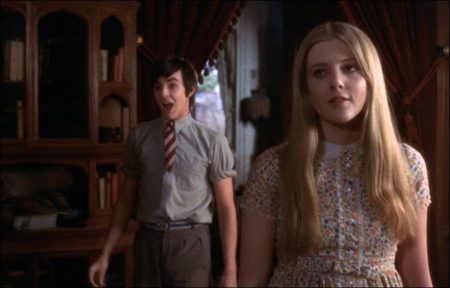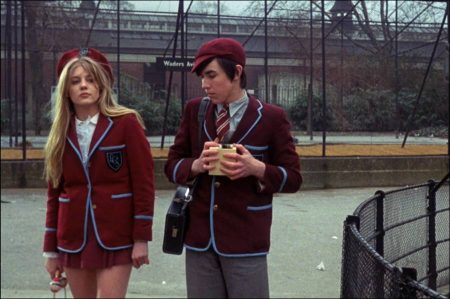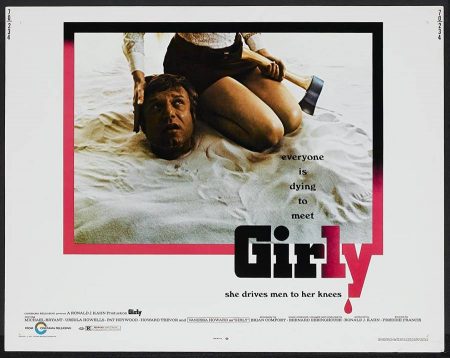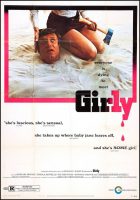Taglines: She takes up where bay Jane leaves off!
Mumsy, Nanny, Sonny and Girly movie storyline. Four individuals live in a secluded manor house in the English countryside, where they engage in an elaborate role-playing fantasy called The Game. In The Game, each individual assumes the role of a member in a “happy” family, completely subsuming his or her individual personality to the point that each individual is known only by the identity he or she is playing: Mumsy (the mother, Ursula Howells), Nanny (the nanny, Pat Heywood), Sonny (the son, played by Howard Trevor), and Girly (the daughter, Vanessa Howard). The Game is built around a set of strictly enforced yet ill-defined rules, the principal one of which is “Rule No. 1: Play the Game.”
As a part of The Game, the teenaged Sonny and Girly regularly venture to more populated areas, where the pair use Girly to lure men back to the manor house. Once there, the men are dressed like schoolboys and forcibly indoctrinated into The Game, assuming the roles of “New Friends.” Those who refuse are “sent to the Angels”—a euphemism for being ritualistically murdered in scenarios built around playground games, which Sonny routinely records on a 16mm movie camera so that the family can later enjoy the resultant snuff film.
One night, Girly and Sonny stake out a swinging London party, where they encounter a male prostitute (Michael Bryant) and his latest client (Imogen Hassall). An instant attraction develops between Girly and the man, who convinces his client to accompany the siblings for a night of carousing. Girly and Sonny take the couple to a playground, where they murder the woman by throwing her from a large slide.
The next morning, Sonny and Girly convince the hungover man that he murdered the woman after a night of heavy drinking, and convince him to return to the manor with them. The prostitute—rechristened “New Friend”—is outfitted in schoolboy clothes and subjected to an indeterminate period of torment “playing the game,” during which he is repeatedly presented with his client’s body as a reminder that the family has incriminating information about him.
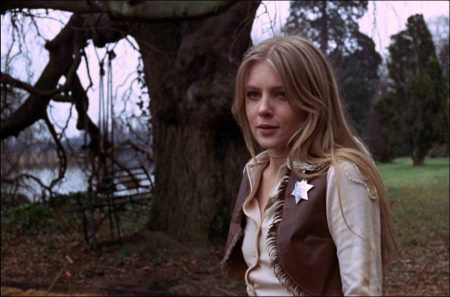
After Mumsy makes sexual overtures to New Friend one evening, he gets the idea to turn the family against itself. New Friend’s plot succeeds, as he creates sexual jealousy between the women after first sleeping with Mumsy and then Girly. Sonny, left out of the sexual politics, petitions to have New Friend “sent to the angels;” in a moment of panic, Girly bludgeons him to death with an antique mirror. Chastising Girly for creating a mess, Mumsy dismisses Sonny as “naughty” and orders a visibly shaken New Friend to bury Sonny beneath a drained fountain on the manor grounds, which is already populated by makeshift gravestones bearing the numerical identities assigned to dispatched “friends.”
Nanny, jealous that she is the only female member of the household left out of New Friend’s attentions, attempts to murder Mumsy with acid-tipped needles, but the attempt fails when it is inadvertently interrupted by New Friend. Girly, realising that Nanny has set her sights on New Friend, hacks Nanny to death with an axe and cooks her head for use in baked goods.
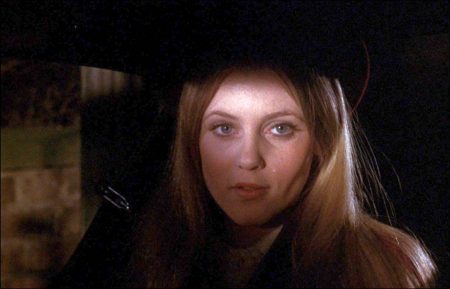
Mumsy, Nanny, Sonny, and Girly, released as Girly outside the United Kingdom, is a 1970 British horror-comedy film. The film originated as a dream project for renowned cinematographer-turned-director Freddie Francis, who wanted the opportunity to direct a film over which he had complete creative control, instead of working on assignment from a studio (as was the case with his previous directorial efforts).
Francis teamed with writer Brian Comport to build the movie around Oakley Court, which Francis had used for exterior shots in previous films. The script was based on a two-act play by Maisie Mosco entitled Happy Family, which was later adapted into a novella by screenwriter Brian Comport as “Mumsy, Nanny, Sonny, and Girly”. Though the film fared poorly in British cinemas, it enjoyed a brief but successful run in North America before going on to achieve status as a cult film.
About the Production
The film began as a dream project for Freddie Francis, a renowned cinematographer who had made the transition to directing at the beginning of the 1960s. Though he had numerous directorial credits to his name, each of these had come to him on commission from a studio, and Francis had long dreamed of making a film over which he had complete creative control.
Over the course of his career, Francis had shot several exterior scenes for films at Oakley Court, but long lamented the fact that neither he nor any other director had ever had the opportunity to film inside the building; in putting together his project, Francis decided that his film would be set in and around Oakley Court, with the script tailored to the building’s unique landscaping and architecture.
Having never written a film himself, Francis hired writer Brian Comport to craft a screenplay, with the only condition being that the story had to be built around Oakley Court. Trying to come up with ideas, Francis and Comport attended the production of an off west end play entitled “The Happy Family,” written by Maisie Mosco, then a radio playwright for the BBC.
The play—itself influenced by Shirley Jackson’s We Have Always Lived in the Castle and Tennessee Williams’ Baby Doll[2]—concerned a woman recently forced to undergo a hysterectomy by her abusive husband, who shortly thereafter left her for a younger woman. Having gone insane, the woman—redubbed “Mumsy”—forces her two children and her maid to join her in an elaborate role-playing game in which young societal drop-outs are welcomed into the family as new “children” for Mumsy.
Both men thought that the play—which was overtly sexual and dealt explicitly with incest, lesbianism, and sadomasochism—was “terrible,” but agreed that it was an excellent tipping-off point for a story that would take place at Oakley Court.[3] Little of the play’s storyline would survive into Comport’s script, beyond the names of the principal characters and the basic premise of an isolated family engaging in a deadly role-playing game.
Owing to the film’s origins as a stage production, Francis largely filled out the cast with experienced stage performers who had made the transition to film, such as Ursula Howells, Pat Heywood, and Michael Bryant. The zookeeper whom Sonny and Girly harass in the film’s opening sequence was played by Michael Ripper, a regular in Hammer Horror films whom Francis knew from his time working for the studio. Howard Trevor, who played Sonny, had only a single prior screen credit, on an episode of the anthology series ITV Playhouse; Girly would prove to be his only film role. Vanessa Howard, who had also gotten her start on ITV, was a relative newcomer who had starred in four films prior to Girly; she performed so well that it was decided in post production that she would become the centerpiece of the film’s marketing campaign, with the intention of turning the film into a star vehicle for her.
Mumsy, Nanny, Sonny and Girly (1970)
Directed by: Freddie Francis
Starring: Michael Bryant, Ursula Howells, Vanessa Howard, Howard Trevor, Pat Heywood, Hugh Armstrong, Robert Swann, Imogen Hassall, Michael Ripper
Production Design by: Jilda Smith
Screenplay by: Brian Comport
Cinematography by: David Muir
Film Editing by: Tristam Cones
Set Decoration by: Dimity Collins
Art Direction by: Maggie Pinhorn
Music by: Bernard Ebbinghouse
MPAA Rating: None.
Distributed by: Cinerama Releasing Corporation
Release Date: February 12, 1970
Views: 344
